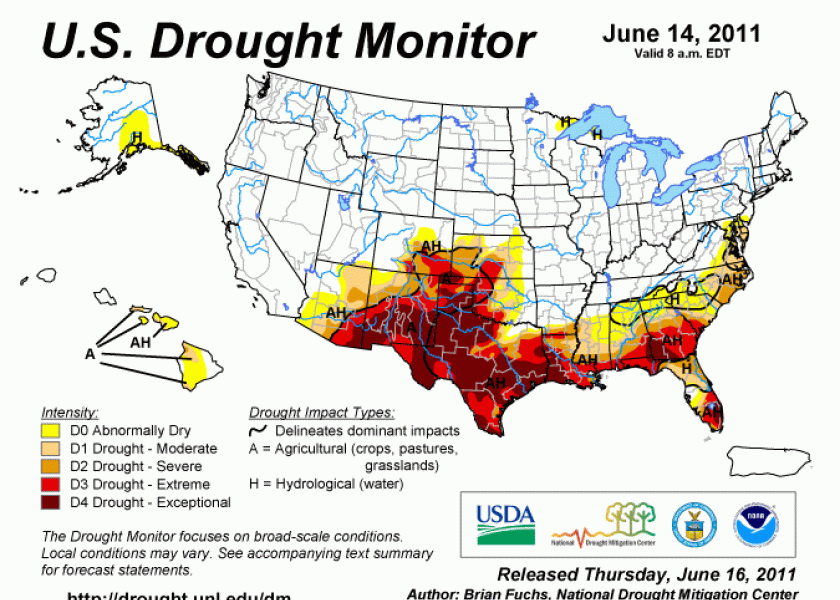Drought Monitor Shows Severe Situation in the South

Deeper culling of cowherds is not just a possibility but reality in some states.
The latest drought monitor doesn't offer much in the way of good news for the southern plains. And the latest pasture condition report form USDA shows that in Texas for instance, 50% of pastures are in very poor condition, Georgia at 44% and New Mexico at 42% in very poor condition.
“As we go another week without any measurable rains and above normal temperatures, forage conditions continue to deteriorate under normal grazing pressure,” said Lee Dudley, Texas AgriLife Extension agent for Panola County. “Many producers have already culled once and are now looking to cull deeper into their herds as they are running out of standing grass.”
In stark contrast, the northern plains continue to have abundant moisture. According to Brian Fuchs, National Drought Mitigation Center, conditions were fairly wet over much of the northern plains, with scattered precipitation in the central plains. Dry conditions continued in the southern plains.
(Follow this link to the current drought monitor.)
"The heaviest rains were in the Dakotas and along the Kansas and Oklahoma border. With all the precipitation, the northern plains were 4-6 degrees Fahrenheit below normal this last week while the southern plains were 6-8 degrees Fahrenheit above normal. In central Oklahoma, D1 was improved to D0 with some stations recording more than 2.50 inches of rain over the last week and close to 8 inches over the last month.
"Other locations that did receive decent rains were left unchanged this week as the mounting deficits and heat quickly diminished any relief they brought. In central Texas, D1 was intensified to D2, while D2, D3 and D4 were all expanded as well. In the Texas Panhandle, D4 was expanded in the northern sections and along the southern coast; D3 was expanded along the coastline. An area along the Gulf Coast of Texas and Louisiana was also intensified from D3 to D4 this week as more indicators were bringing this region in line with current D4 classifications."







